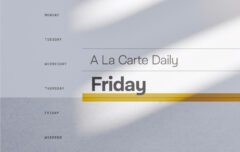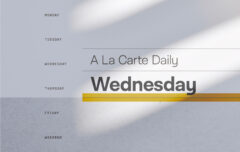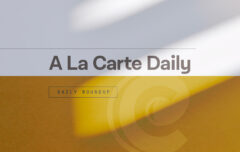The Passion of the Christ has been described by Protestant leaders as being ‘factually accurate,’ ‘very accurate [in the details],’ ‘realistic,’ ‘biblical,’ ‘an accurate account,.’ ‘a true representation of Jesus’ and ‘close to the Scriptures.’ All of these quotes were taken from The Passion Outreach Web site, a resource dedicated to helping churches of all denominations capitalize on this movie. This movie is continually described as an exceedingly accurate portrayal of the gospel account of the passion of Jesus — an account that transcends denominations.
Mel Gibson has repeatedly acknowledged that He drew inspiration for The Passion of the Christ both from the gospels and from the writings of Anne Catherine Emmerich. He respects her to such an extent that he carries an Emmerich relic in his pocket at all times. Most Protestants pastors and leaders admit that Gibson has taken ‘artistic license’ at times, but by reading Emmerich’s book The Dolorous Passion of Our Lord Jesus Christ we will see that much of what is perceived as artistic license is actually following the words of Emmerich. It seems that it is impossible to reconcile Emmerich and the Bible. The movie must either follow the Word of God or the words of a human. Though the two seem to complement each other at times, far more often they contradict. A staunch Roman Catholic and devotee of Mary, Emmerich adds situations and theology which stand in direct contrast to the beliefs Protestants should hold dear.
Why?
Before we begin this examination I would like to answer the question of why I have decided to present this information. Certainly this could be construed as an attempt to just be critical for the sake of being critical. It could be seen as an attempt to lower other people’s perception of a man who claims to be a Christian. It could be seen as an attempt to discredit this movie.
I present this information for the sake of sharing what is true and what is false in this movie. This movie is being presented as truth, yet much of it is error. I seek to expose what is truth and what is error so people who see the movie can understand what parts of the story truly happened and are therefore important and part of the story of the Savior’s death. At the same time I wish to show which parts are inspired by false revelation supposedly revealed by God almost two thousand years after the writing of the Bible. The error adds elements to the story that detract from God’s glory and Christ’s purpose in suffering and dying.
Brief Biographical Sketch of Anne Catherine Emmerich
The following information is drawn primarily from the Catholic Encyclopedia. It is evident that her abilities are fiction, yet the Encyclopedia teaches they are fact.
Anne Catherine Emmerich was an Augustinian nun, stigmatic and ecstatic who was born in 1774 and died in 1824. She was forced to work from an early age and after a difficult twenty eight years of life entered the Augustinian convent at Agnetenberg, Dulmen. She soon began to display strange powers and ecstasies. Her convent was closed in 1812 and she was forced to find refuge in a poor widow’s house. In 1813 she became bedridden. It was during her long illness that her supernatural abilities became popular knowledge. Some of these abilities included conversing with the child Jesus, predicting future events, having knowledge of other people’s diseases and prescribing remedies that never failed. She soon experienced the stigmata with which she suffered for many years. In 1819 the poet Klemens Brentano visited her and she asked him to write down the many visions God had given her. In 1833 the “The Dolorous Passion of Our Lord Jesus Christ according to the Meditations of Anne Catherine Emmerich” was released followed in 1852 by “The Life of The Blessed Virgin Mary.”
Six weeks after her death a rumor surfaced that her body had been removed from its grave. She was disinterred and it was discovered that her body had suffered no decay.
Emmerich’s visions are considered by the Roman Catholic Church to be private revelations and not public revelations. Therefore, not all Catholics are required to believe them and the Church has no official position on their accuracy or truth. They are widely accepted amongst Traditionalist Catholics and relatively unknown to other Catholics.
Emmerich’s Influence in The Passion of the Christ
The following table details many of the scenes in the movie that are not described in the Bible and shows, where I have been able to find out, where the inspiration came from. This is not an exhaustive list of all the extra-Biblical material presented in the movie.
| The Passion of the Christ | The Dolorous Passion of Our Lord Jesus Christ |
|---|---|
| Satan torments Jesus in the garden of Gethsemane | Chapter 1, pages 100-102 “But Satan, who was enthroned amid all these horrors, and even filled with diabolical joy at the sight of them, let loose his fury against Jesus, and displayed before the eyes of his soul increasingly awful visions, at the same time addressing his adorable humanity in words such as these: ‘Takest thou even this sin upon thyself? Art thou willing to bear its penalty? Art thou prepared to satisfy for all these sins?’” |
| Mary wakes up, sensing Jesus’s arrest | Chapter 1, page 116 “During this agony of Jesus, I saw the Blessed Virgin also overwhelmed with sorrow and anguish of soul, in the house of Mary, the mother of Mark. She was with Magdalen and Mary in the garden belonging to the house, and almost prostrate from grief, with her whole body bowed down as she knelt. She fainted several times, for she beheld in spirit different portions of the agony of Jesus.” Chapter 11 “THE Blessed Virgin was ever united to her Divine Son by interior spiritual communications; she was, therefore, fully aware of all that happened to him—she suffered with him, and joined in his continual prayer for his murderers. But her maternal feelings prompted her to supplicate Almighty God most ardently not to suffer the crime to be completed, and to save her Son from such dreadful torments.” |
| Soldiers throw Jesus off a bridge | Chapter 3, page 131 “I saw our Lord fall twice before he reached the bridge, and these falls were caused entirely by the barbarous manner in which the soldiers dragged him; but when they were half over the bridge they gave full vent to their brutal inclinations, and struck Jesus with such violence that they threw him off the bridge into the water” |
| Jesus’ abuse when before the priests. | “At this answer of Jesus the countenance of Annas flushed with fury and indignation. A base menial who was standing near perceived this, and he immediately struck our Lord on the face with his iron gauntlet, exclaiming at the same moment, ‘Answerest thou the High Priest so?’ Jesus was so nearly prostrated by the violence of the blow, that when the guards likewise reviled and struck him, he fell quite down, and blood trickled from his face on to the floor. Laughter, insults, and bitter words resounded through the hall. The archers dragged him roughly up again, and he mildly answered, ‘If 1 have spoken evil. give testimony of the evil; but if well, why strikest thou me?’” |
| Flashback: Jesus, as a young carpenter, is at home with Mary | |
| During court scene, Mary prays, “It has begun Lord. So be it.” | |
| After thrice denying Jesus, Peter runs to Mary, weeping and calling her, “Mother.” | Chapter 11, page 165 “Mary approached him instantly, and said, ‘Simon, tell me, I entreat you, what is become of Jesus, my Son !’ These words pierced his very heart; he could not even look at her, but turned away, and again wrung his hands. Mary drew close to him, and said in a voice trembling with emotion: ‘Simon, son of John, why dost thou not answer me?’—’Mother!’ exclaimed Peter, in a dejected tone, ‘0, Mother, speak not to me—thy Son is suffering more than words can express: speak not to me!’” |
| Mary walks about the now-emptied courtyard and then falls with her face pressed to the floor, directly above the cell in which Jesus is imprisoned | Chapter 11, page 166 “John, therefore, led her and the holy women to the front of the prison where Jesus was confined. Mary was with Jesus in spirit, and Jesus was with her; but this loving Mother wished to hear with her own cars the voice of her Divine Son.” |
| Satan and his minions torment Judas | Chapter 5, page 144 “I beheld the traitor, Judas Iscariot, wandering about, alone, and a prey to the tortures of his guilty con-science; he feared even his own shadow, and was followed by many devils, who endeavored to turn his feelings of remorse into black despair.” |
| An effeminate Herod is depicted amidst cushions | Chapter 20, page 194 “Herod was expecting them. He was seated on a pile of cushions, heaped together so as to form a species of throne, in a spacious hall, and surrounded by courtiers and warriors.” Chapter 20, page 195 “the luxurious and effeminate prince turned away in disgust, uttered the name of God, and said to the priests in a tone of mingled pity and contempt, ‘Take him hence, and bring him not back into my presence in such a deplorable state.’” |
| Herod calls Jesus a fool and commands that Jesus be given a fool’s homage | Chapter 20, page 197 “But he spoke in the most contemptuous manner to Jesus, and turning to the guards and servants who surrounded him, and who were about two hundred in number, said: ‘Take away this fool, and pay him that homage which is his due; he is mad, rather than guilty of any crime.’” |
| The scourging scene is very similar to that written by Emmerich. Jesus is scourged against a pillar in the center of a courtyard. The scourging culminates with the use of chains with barbs that tear chunks off his back. Jesus is then rotated so the soldiers can scourge the other side. Mary is prominent throughout the scene as if exhorting Jesus. | Chapter 22, page 206 “This pillar, placed in the centre of the court, stood alone, and did not serve to sustain any part of the building” Chapter 22, page 206 “Jesus trembled and shuddered as he stood before the pillar, and took off his garments as quickly as he could, but his hands were bloody and swollen. The only return he made when his brutal executioners struck and abused him was to pray for them in the most touching manner: he turned his face once towards his Mother, who was standing overcome with grief; this look quite unnerved her: she fainted, and would have fallen, had not the holy women who were there supported her.” Chapter 22, page 208 “Two fresh executioners took the places of the last mentioned, who were beginning to flag; their scourges were composed of small chains, or straps covered with iron hooks, which penetrated to the bone, and tore off large pieces of flesh at every blow. What word, alas! could describe this terrible—this heartrending scene! The cruelty of these barbarians was nevertheless not yet satiated; they untied Jesus, and again fastened him up with his back turned towards the pillar. As he was totally unable to support himself in an upright position, they passed cords round his waist, under his arms, and above his knees, and having bound his hands tightly into the rings which were placed at the upper part of the pillar, they recommenced scourging him” Chapter 23, page 211 “I SAW the Blessed Virgin in a continual ecstasy during the time of the scourging of her Divine Son; she saw and suffered with inexpressible love and grief all the torments he was enduring.” |
| During the scourging scene, Mary says, “My son, when, where, how will you choose to be delivered from this?” | |
| Pilate’s wife hands white linens to Mary, who uses these to wipe Jesus’s blood from the floor | Chapter 23, page 211 “I saw Claudia Procles, the wife of Pilate, send some large pieces of linen to the Mother of God.” Chapter 25, page 218 “Then it was that the Mother of Jesus, accompanied by the holy women, approached the pillar and wiped up the blood with which it and the ground around were saturated.” |
| Flashback: Mary Magdalene recalls Jesus preventing her from being stoned and writing on the ground (this is a misusage of John 8:1-11; the woman in this passage was never named) | |
| Jesus prays, “I am your servant and the son of your handmaid.” | |
| Jesus falls multiple times while carrying the cross (These correspond to the 3rd, 7th, and 9th Stations of the Cross. “The Stations of the Cross are a popular Catholic devotion. Each of the fourteen stations stands for an event which occurred during Jesus’ Passion and death at Calvary on Good Friday. A person making the Stations Of The Cross is to meditate about each event depicted at each station, and pray.” | Chapters 31-33 |
| Mary meets Jesus while on the way to Golgotha (4th Station of the Cross) | Chapter 32 “Then came her beloved Son. He was almost sinking under the heavy weight of his cross, and his head, still crowned with thorns, was drooping in agony on his shoulder. He cast a look of compassion and sorrow upon his Mother, staggered, and fell for the second time upon his hands and knees. Mary was perfectly agonised at this sight; she forgot all else; she saw neither soldiers nor executioners; she saw nothing but her dearly-loved Son; and, springing from the doorway into the midst of the group who were insulting and abusing him, she threw herself on her knees by his side and embraced him. The only words I heard were, ‘Beloved Son!’ and ‘Mother!’” |
| Flashback: Mary remembers a time when Jesus (as a child) fell and she came running with outstretched arms | |
| The scene in which Simon of Cyrene is pressed into service is very similar to that written by Emmerich. One of Simon’s children is present. He is initially reluctant, exhibiting great disdain towards Jesus. Simon soon after experiences a change of heart. | Chapter 33 “At this moment Simon of Cyrene, a pagan, happened to pass by, accompanied by his three children. He was a gardener, just returning home after working in a garden near the eastern wall of the city, and carrying a bundle of lopped branches. The soldiers perceiving by his dress that he was a pagan, seized him, and ordered him to assist Jesus in carrying his cross. He refused at first, but was soon compelled to obey, although his children, being frightened, cried and made a great noise, upon which some women quieted and took charge of them. Simon was much annoyed, and expressed the greatest vexation at being obliged to walk with a man in so deplorable a condition of dirt and misery; but Jesus wept, and cast such a mild and heavenly look upon him that he was touched, and instead of continuing to show reluctance, helped him to rise, while the executioners fastened one arm of the cross on his shoulders, and he walked behind our Lord, thus relieving him in a great measure from its weight” |
| Veronica wipes Jesus’s face (6th Station of the Cross; the cloth with the bloody face imprinted in it is now a relic) | Chapter 34 “Seraphia was the name of the brave woman who thus dared to confront the enraged multitude; she was the wife of Sirach, one of the councillors belonging to the Temple, and was afterwards known by the name of Veronica, which name was given from the words vera icon (true portrait), to commemorate her brave conduct on this day. Seraphia had prepared some excellent aromatic wine, which she piously intended to present to our Lord to refresh him on his dolorous way to Calvary. She had been standing in the street for some time, and at last went back into the house to wait. She was, when I first saw her, enveloped in a long veil, and holding a little girl of nine years of age whom she had adopted, by the hand; a large veil was likewise hanging on her arm, and the little girl endeavoured to hide the jar of wine when the procession approached. Those who were marching at the head of the procession tried to push her back; but she made her way through the mob, the soldiers, and the archers, reached Jesus, fell on her knees before him, and presented the veil, saying at the same time, ‘Permit me to wipe the face of my Lord.’ Jesus took the veil in his left hand, wiped his bleeding face, and returned it with thanks. Seraphia kissed it, and put it under her cloak. The girl then timidly offered the wine, but the brutal soldiers would not allow Jesus to drink it.” |
| The scene of Jesus and Simon of Cyrene is very similar to that written by Emmerich. Simon threatens to stop helping if the soldiers continue in their cruelty, saying that he will do so even if the soldiers kill him. Simon then places Jesus’s arm across his shoulders, supporting him. | Chapter 35, page 243 “Their cruelty to Jesus so exasperated Simon of Cyrene that he at last exclaimed, ‘If you continue this brutal conduct, I will throw down the cross and carry it no farther. I will do so if you kill me for it.’” Chapter 35, page 244 “Jesus was on the point of again falling, but Simon, who was behind, perceiving that he could not stand, hastened to support him; he leant upon Simon, and was thus saved from falling to the ground.” |
| The scene in which Jesus is nailed to the cross is very similar to that written by Emmerich. After the first hand is nailed, Jesus’ other arm is stretched out with a sickening crunch to reach the hole provided for the nail. The soldiers also subject Jesus to more agony as they stretch his body out to the wooden footrest that they placed too low. | Chapter 38, page 250 “The Blessed Virgin stood motionless; from time to time you might distinguish her plaintive moans; she appeared as if almost fainting from grief, and Magdalen was quite beside herself. When the executioners had nailed the right hand of our Lord, they perceived that his left hand did not reach the hole they had bored to receive the nail, therefore they tied ropes to his left arm, and having steadied their feet against the cross, pulled the left hand violently until it reached the place prepared for it. This dreadful process caused our Lord indescribable agony, his breast heaved, and his legs were quite contracted.” Chapter 38, page 251 “The executioners had fastened a piece of wood at the lower part of the cross under where the feet of Jesus would be nailed, that thus the weight of his body might not rest upon the wounds of his hands, as also to prevent the bones of his feet from being broken when nailed to the cross. A hole had been pierced in this wood to receive the nail when driven through his feet, and there was likewise a little hollow place for his heels These precautions were taken lest his wounds should be torn open by the weight of his body, and death ensue before he had suffered all the tortures which they hoped to see him endure. The whole body of our Lord had been dragged upward, and contracted by the violent manner with which the executioners had stretched out his arms, and his knees were bent up; they therefore flattened and tied them down tightly with cords; but soon perceiving that his feet did not reach the bit of wood which was placed for them to rest upon, they became infuriated. Some of their number proposed making fresh holes for the nails which pierced his hands, as there would be considerable difficulty in removing the bit of wood, but the others would do nothing of the sort, and continued to vociferate, ‘He will not stretch himself out, but we will help him;’ they accompanied these words with the most fearful oaths and imprecations, and having fastened a rope to his right leg, dragged it violently until it reached the wood, and then tied it down as tightly as possible. The agony which Jesus suffered from this violent tension was indescribable; the words ‘My God, my God,’ escaped his lips, and the executioners increased his pain by tying his chest and arms to the cross, lest the hands should be torn from the nails. They then fastened his left foot on to his right foot, having first bored a hole through them with a species of piercer, because they could not be placed in such a position as to be nailed together at once. Next they took a very long nail and drove it completely through both feet into the cross below, which operation was more than usually painful, on account of his body being so unnaturally stretched out” |
| As the cross is lifted up, Mary opens fists, releasing pebbles she had been holding (perhaps in a gesture of surrender) | |
| Jesus is depicted as having long hair and being generally pleasing to the eye | Chapter 41, page 257 “The complexion of our Lord was fair, like that of Mary, and slightly tinted with red; but his exposure to the weather during the last three years had tanned him considerably. His chest was wide, but not hairy like that of St. John Baptist; his shoulders broad, and his arms and thighs sinewy; his knees were strong and hardened, as is usually the case with those who have either walked or knelt much, and his legs long, with very strong muscles; his feet were well formed, and his hands beautiful, the fingers being long and tapering, and although not delicate like those of a woman, still not resembling those of a man who had laboured hard. His neck was rather long, with a well-set and finely proportioned head; his forehead large and high; his face oval; his hair, which was far from thick, was of a golden brown colour, parted in the middle and falling over his shoulders; his beard was not any great length, but pointed and divided under the chin.” |
| Mary begs, “Flesh of my flesh, heart of my heart, my son, let me die with you.” | Chapter 43, page 259 “the Blessed Virgin, filled with intense feelings of motherly love, entreated her Son to permit her to die with him” |
| A soldier is showered by Jesus’ blood after piercing His side | Chapter 48, page 276 “He seized his lance and rode quickly up to the mound on which the Cross was planted, stopped just between the cross of the good thief and that of our Lord, and taking his lance in both hands, thrust it so completely into the right side of Jesus that the point went through the heart, and appeared on the left side. When Cassius drew his lance out of the wound a quantity of blood and water rushed from it, and flowed over his face and body. This species of washing produced effects somewhat similar to the vivifying waters of Baptism: grace and salvation at once entered his soul. He leaped from his horse, threw himself upon his knees, struck his breast, and confessed loudly before all his firm belief in the divinity of Jesus.” |
| Jesus’ body is lowered by the soliders and other men | Chapter 48, page 285 “Then Joseph and Nicodemus, having placed ladders against the front of the Cross, in a very upright position, and close to the body, untied the upper strap, and fastened it to one of the hooks on the ladder; they did the same with the two other straps, and passing them all on from hook to hook, caused the sacred body to descend…” |
| Jesus’ body is lowered into Mary’s arms and the camera focuses on Mary in the “Pieta pose” before panning and fading out (this suggests Mary as a co-redeemer) | Chapter 50, page 285 “When the body was taken down it was wrapped in linen from the knees to the waist, and then placed in the arms of the Blessed Virgin, who, overwhelmed with sorrow and love, stretched them forth to receive their precious burden.” Chapter 51, page 286 “THE Blessed Virgin seated herself upon a large cloth spread on the ground, with her right knee, which was slightly raised, and her back resting against some mantles, rolled together so as to form a species of cushion. No precaution had been neglected which could in any way facilitate to her—the Mother of Sorrows—in her deep affliction of soul, the mournful but most sacred duty which she was about to fulfil in regard to the body of her beloved Son. The adorable head of Jesus rested upon Mary’s knee, and his body was stretched upon a sheet. The Blessed Virgin was overwhelmed with sorrow and love. Once more, and for the last time, did she hold in her armsthe body of her most beloved Son, to whom she had been unable to give any testimony of love during the long hours of his martyrdom. And she gazed upon his wounds and fondly embraced his blood-stained cheeks, whilst Magdalen pressed her face upon his feet.” |
Sources:
Emmerich, Anne Catherine. The Dolorous Passion of Our Lord Jesus Christ. Read It Online
I am indebted to a brother in Christ for doing much of the comparison between the movie and Emmerich’s book.
‘I testify to everyone who hears the words of the prophecy of this book: if anyone adds to them, God will add to him the plagues which are written in this book.’
Revelation 22:18










